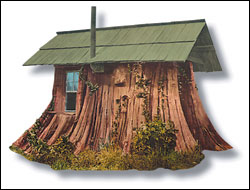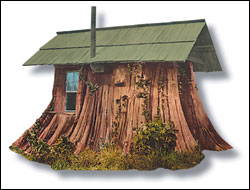It’s not often a skunk gets invited to a garden party, so when an invitation comes, a skunk grabs it. A couple of weeks ago, I was invited to a conference put on by the Church Council of Greater Seattle that was inspired by an earlier Mossback column (“The God Wars,” March 24), which was based on a study of religious practice—or the lack of it— in our region: Religion and Public Life in the Pacific Northwest: The None Zone, edited by Patricia O’Connell Killen and Mark Silk.
“The None Zone” refers to the fact that our part of the country is the least religious in America, in conventional terms at least. More than 60 percent of the population is not claimed by any church or religious group, and more than 30 percent say they have no religion at all. Nationally, in contrast, those numbers are only 40 percent and 20 percent, respectively.
As a “None,” I look upon this state of affairs quite favorably. The pilgrims viewed the New World as “the last redoubt of paganism,” and I like to think of the Northwest corner as the last redoubt’s last stronghold. Some members of the Church Council would view it otherwise. They see us “Nones” as a call to action, perhaps even a temptation. The central theme of the conference at St. Mark’s Cathedral on Capitol Hill was how to “minister” in the None Zone. Are churches simply failing to reach people here? Or is there something rooted in the regional character that makes us resistant to organization and conversion? And does it mean anything for the future of religion? As one person asked, are we a “backwater or a bellwether”?
I was asked to come as a representative “None,” which I was happy to do when it was clear that I wasn’t asked to speak on behalf of “nuns.” The room was full of Christian do-gooders; nevertheless, they were very nice people. I was not prepared to offer any advice on the subject of ministering, because my core message was “leave us alone.”
What I found much more difficult was where it left me in regard to my own spiritual feelings. I sweated profusely as I sat at the panel table trying to find ways to articulate the inarticulatable. I was brought up to believe that a person’s religious and spiritual beliefs and practices were intensely private—a matter between you and your God, the trees, Odin, Darwin, Buddha, or the eternal nothingness, take your pick. Brushing up against these issues in a public forum made me uneasy. Yet I am very interested in spiritual questions and experience. This lives alongside a certain smugness I feel because I don’t fit into any religious category I can name.
At least I thought I didn’t. Earlier this year, I came across an incredibly interesting book that should be “must” reading for every journalist. It was written by Doug Underwood, the former Seattle Times reporter who is an associate professor in the communications department at the University of Washington. His 2002 study, From Yahweh to Yahoo!: The Religious Roots of the Secular Press, looks not only at the religious attitudes of members of the working press but at how the very notion of “crusading” journalism was biblically inspired. Editors and reporters have become latter-day prophets, steeped in reform movements that have been driven by religious faith. We channel that religious fervor, even unknowingly, into the pages of your local rag. Call it “disorganized religion.”
The media’s underlying ideology, Underwood claims, is “a blend of Judaic notions of a chosen people with New Testament concepts of God’s love for all humans and God’s truth unfolding in the world.” Our business, he says, is infused with these notions. I can attest that I’ve seen some messiah complexes in the newsroom. Who in this business doesn’t want to kick around the money lenders or cast down the proud?
So it’s humbling to discover that, though sleeping in on Sundays, I’m apparently working in the vineyards of the Lord during the week, at the paper. Who suspected that the godless media are actually a stealth faith-based initiative, secularized for the sake of the Constitution. Perhaps it’s only our vanity that leads us to see journalism as a unique enterprise. The secular media might be a bulwark against religion, but Underwood shows that they are no barrier to the deep, religious passions that flow through the foundations of the trade, or the language and ideals of many journalists.
It occurs to me too that here in the “None Zone,” those of us who eschew organized religion are still surrounded by an environment that is profoundly spiritual. Underwood quotes poet Walt Whitman as writing that “logic and sermons never convince,” which I find true. “There is more truth, [Whitman] said, ‘in the damp of the night.'” If dampness is truth, the Northwest must be among the holiest of shrines.
Patricia O’Connell Killen, who presented highlights from her book at the conference, concluded with the observation that in modern America, size matters in religion. Christian megachurches are growing, and their congregations—which number in the thousands—are a testament to their “truth.” In that regard, she speculated that organized religion might be stymied here because “you can’t build a sanctuary bigger than Mount Rainier.”
The spiritual power of that mountain, then, is indeed profound. It serves as a kind of protective talisman for those of us seeking spiritual privacy, even those of us who aren’t, apparently, practicing what we preach.







